
In most cases, a charitable organization will be able to receive the types of gifts mentioned above. However, some assets which may include special items like works of art or antiques or other complicated gifts can be more challenging for smaller charitable organizations to handle. It can be overwhelming to keep up with the requirements for in-kind gift reporting. However, don’t make the mistake of turning away valuable and helpful contributions—it’s far better to get trusted professional help with the reporting process.
- This publication is distributed with the understanding that CBIZ is not rendering legal, accounting or other professional advice.
- These are just a few of the HR functions accounting firms must provide to stay competitive in the talent game.
- The largest challenge of accepting in-kind donations is that sometimes nonprofits receive items they can’t use.
- With an in-depth understanding of in-kind donations and how they can help your organization, you’ve likely already started thinking about which items your nonprofit could most benefit from.
- Another classification of in-kind gifts is Intangible Personal Property (ITPP).
Allow your nonprofit to benefit—and to benefit the surrounding communities—from the array and value of in-kind donations. If you have questions about in-kind donations, contact your Aldrich Advisor. However, if the service provided does not create or enhance a nonfinancial asset, it needs to be a specialized skill to be recognized as an in-kind donation. Nonprofit organizations should have a gift acceptance policy that will help the staff know which types of gifts are acceptable and which ones need further evaluation.
How much of an in-kind contribution is tax deductible?
It is important to let donors know when you will accept in-kind donations. This will help keep your internal operations organized and running smoothly. Also, if you are a non-profit that regularly has to purchase supplies, in-kind donations will save you the time of ordering and recording gift in kind meaning your purchase as an expense in your accounting software. In-kind donations can take out a step and save you and your organization time. This aspect of tax reporting can initially prove confusing for nonprofits, but learning some information on the workings of non-cash gifts will help.
If a donation does not significantly impact your mission, it is not worth accepting. An in-kind donation refers to charitable contributions in the form of goods, services, time, and expertise, instead of cash. Learn more about this alternative form of giving and how it can help your nonprofit organization reach its goals. This guide will teach you about in kind contributions, issuing donation receipts, and assessing the impact of in-kind donations on nonprofits. The term “in-kind donation” refers to any non-monetary gift made to a nonprofit or to benefit a charitable cause. In-kind donations most often come in the form of physical goods or no-cost services.
Search form
It also calculates the value of goods or services in lieu on cash gifts. These steps ensure compliance with federal and state laws and prevent deceptive practices, such as inflating numbers or concealing administrative costs. Gifts-in-kind, also known as nonfinancial assets or in-kind donations, are a type of charitable giving where goods and services are given as a “gift” to an organization in place of cash contributions. However, an in-kind donation must meet specific requirements for recognition within its financial reports.


In-kind donations—also called gifts-in-kind, donated services, or in-kind contributions—are goods and services used to carry out the nonprofit’s mission. They enable nonprofits to accomplish more than their budget and resources would typically allow. For example, in-kind donations for a fundraiser might include the use of event space, catered food, entertainment services, sound and lighting equipment rental, and items to be auctioned.
What are best practices for in-kind donations?
Fundraisers make generous use of donated goods and services to cover event costs and fill their portfolio of auctioned items. Development officers graciously receive real property, financial instruments, and other goods that can be converted to cash or used by the organization directly to support its programs and operations. Subject matter experts often lend their time and talents at no charge to spare the organization the cash outlay for such services.
- For example, in-kind donations for a fundraiser might include the use of event space, catered food, entertainment services, sound and lighting equipment rental, and items to be auctioned.
- Then, identify which items would be easiest to secure as in-kind donations and divide up the responsibilities for soliciting them.
- Promote donations by mentioning the donor’s name and highlighting the impact of the contribution.
- To value in-kind contributions, your organization should determine a fair value and track the number of hours the service is provided.
- Event season is upon us and there are many ways nonprofits can help lighten the load that comes along with running…
- Individuals, corporations, and businesses can all make in-kind donations.

